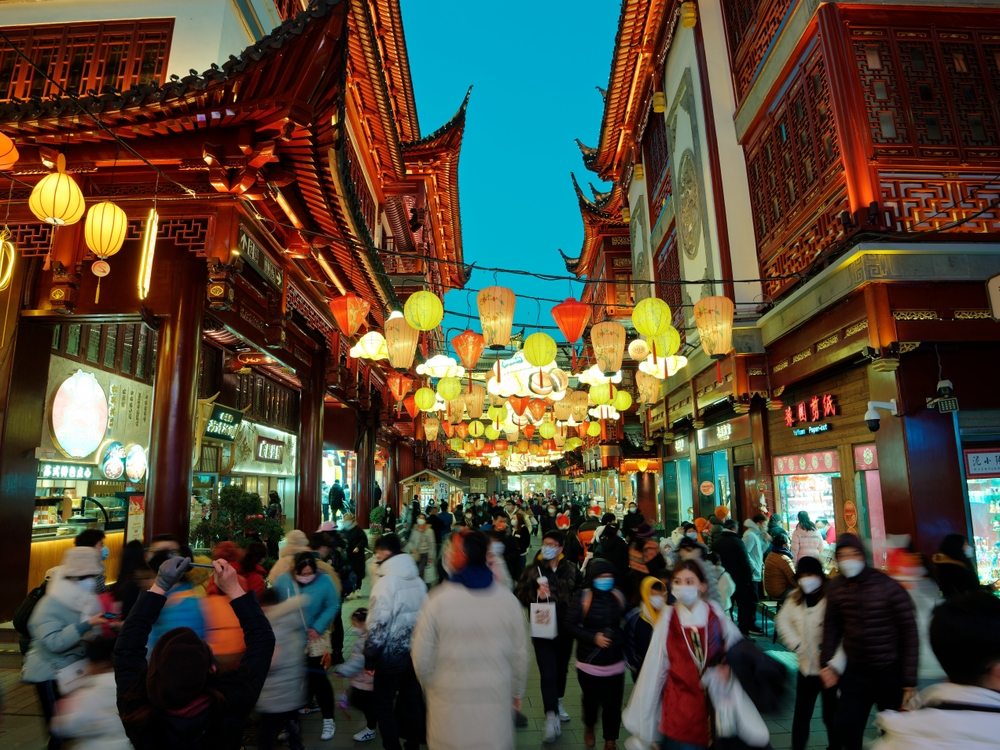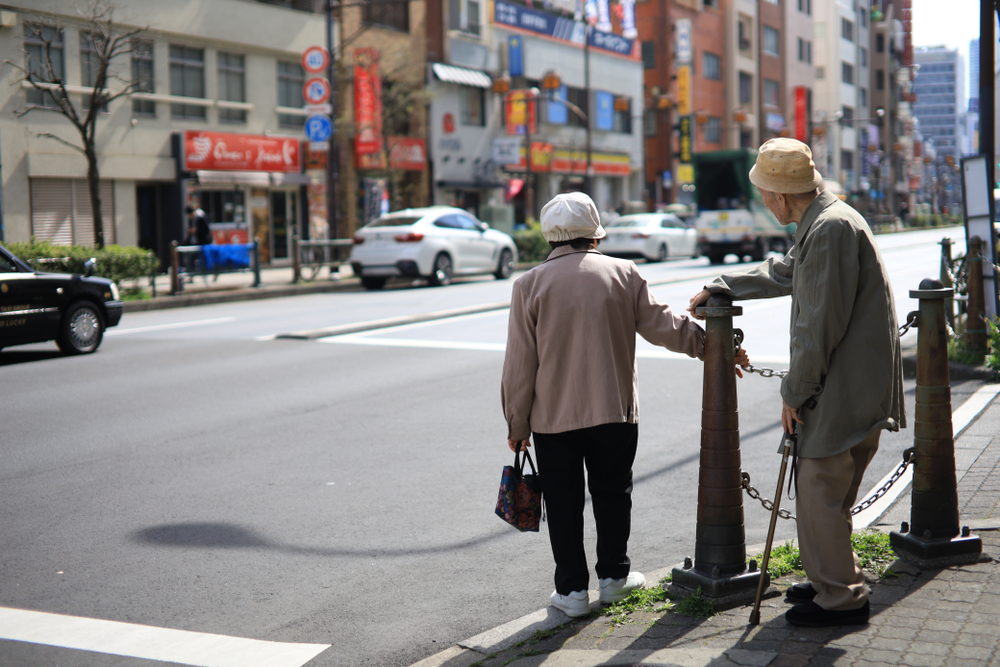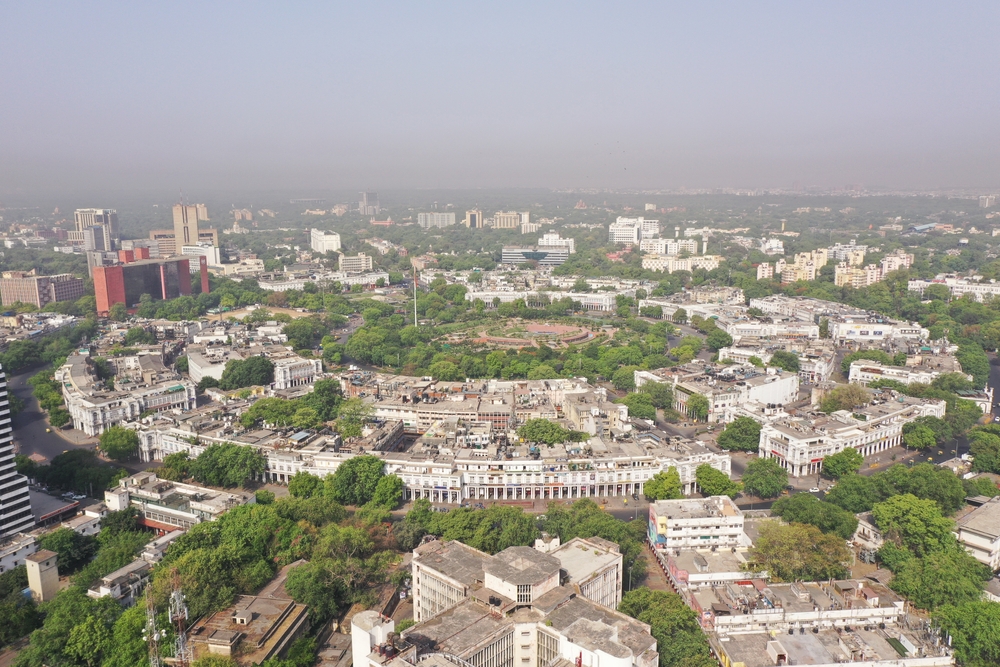Asia after COVID: A story of uneven recovery and reinvention
This article is based on The Economist keynote at the PropertyGuru Asia Real Estate Summit originally presented on 8 December 2021.
Some countries were moving ahead pretty quickly, while others were lagging behind in their recovery

As countries across the globe resume operations in the midst of the reopened borders, let us take a look back, but also a look forward to where we think we are going. For many of us, 2020 was a year of simply responding to a crisis; 2021 offered a good opportunity for gathering a few lessons that we can use in the future; and 2022 has been about using those lessons and transforming our organisations to meet the new business environment.
It is also worth exploring the factors that are shaping that business environment — and the insights that can help private sector leaders design plans and build budgets for the years to come. Finally, we will take a look at several markets around the region just to get a sense of where they are now and where we think they are headed.
Global factors affecting Asia
Here are a few global macroeconomic, geopolitical, technological, and demographic trends affecting the region:
Positive global forecast hides market-level idiosyncrasies
Several markets, such as China and Vietnam, saw GDP growth in 2020, and they built up on that momentum in 2021. Their growth in 2020 was not as dramatic as what they might normally experience, but any market that saw growth in 2020 was doing really well.
Australia, India, South Korea, and Indonesia lost ground in 2020 and saw a drop in GDP growth but have managed to make up that loss in 2021. These markets had seen some small losses but managed to see pretty decent growth last year and are continuing that momentum in 2022.
Hong Kong, Malaysia, and Singapore lost ground in 2020, did not quite make it up in 2021, but bounced back in 2022. Japan, Thailand, and the Philippines are going to take just a bit longer.
There are a number of factors that affect economic recovery, such as the dominant industry in the country and how that was affected by the pandemic.
South Korea, which is very dependent on consumer electronics exports, did fairly well in 2020 and 2021. This had to do with the fact that, all around the world, many people were on lockdown and were using gadgets such as tablets to stream their favourite shows at home. And those who were working from home wanted a new laptop or a new monitor to get their work done.
By contrast, Thailand and the Philippines, where tourism is a dominant industry, were basically shut down in early 2020. And until the industry picks up again, they are going to have trouble recovering.
One of the things that allow a country to open, especially countries that rely on tourism, is the vaccination rate.

Vaccination forecasts remain fluid
Initially, mass vaccination targets were set to 60 percent of the population. That was the target for many countries, but with the emergence of the Delta variant, many have realised that setting the target to 80 to 85 percent of the population was more ideal.
So, the pace of vaccination increased from quarter to quarter, which was very promising and very optimistic. To illustrate, Malaysia started their vaccination process a bit late; starting at the end of February 2021. The Economist originally predicted that they were not going to hit mass vaccination until late 2022, then revised that prediction to early 2022. However, come late 2021, Malaysia actually achieved mass vaccination and about 80 percent of the population was fully vaccinated.
It is great to see countries picking up their vaccination pace, but there is a concern that comes along with that: rising inflation. As the crisis continued, governments put a lot of money back into the economy to keep businesses afloat. There is some concern that all of the money that flowed into the economy is suddenly going to be unleashed as consumer demand explodes once countries reopen.
At the same time, prices are still increasing partly because of the cost of supplies and transportation and the limited manufacturing activity in countries still experiencing safe distancing requirements.
Recovering demand causes inflation to spike
In 2021, price increases due to recovering demand were projected to be temporary, but factors unrelated to the pandemic, most especially the Russia-Ukraine war, caused inflation to increase further in 2022.
Organisations rapidly adopt digital transformation
For years, many companies merely talked about digital transformation and never implemented it. However, in 2020, they did not have much choice. As people started working from home, as business travel shut down, and as consumers could no longer go to physical stores, a number of digital tools came into play.
As we emerge from the pandemic, do we expect digital transformation to go away? The answer is no. We are well down the path of digital transformation, and the tools that companies are using have already been embedded into their processes. Organisations have made their IT investments and they are not likely to take them back.
On the consumers’ side, customers have gotten used to online shopping, AI-powered customer service, digital payments, and other convenient digital tools. When it comes to making purchases, customers regard the ease of purchasing as equally important as the product they are purchasing.
Ultimately, we expect digital transformation trends to continue well into the future. These trends are already being seen around the world, including Asia.
Regional trends
Let us take a look at some more uniquely regional trends affecting the business environment within the APAC region:
China is expanding its international presence
It is impossible to talk about business in Asia without talking about China. China has been expanding its international presence over the last few years in absolute terms but also relative to the United States.
The US has notably lost influence in Asia. For one, it is not a party to the major trade agreements in the region, such as the RCEP or the CPTPP. Moreover, there have been too many US embassies without an ambassador for the last few years. Evidently, the US has stepped back a bit from Asia, leaving a gap that China has filled.
Meanwhile, China is expanding the Belt and Road Initiatives (BRI) to include a health BRI and a digital BRI in addition to the physical infrastructures that they have been building. They have also been engaged in vaccine diplomacy, providing vaccines to countries in Southeast Asia.
Companies are implementing a China +1 strategy
China continues to exert its influence in the region, driven largely by China’s rocky relationship with the US. This, in turn, has created some benefits for countries in Southeast Asia. Vietnam has even experienced pretty dramatic growth in manufacturing partly because of the conflict between the US and China.
The growth of manufacturing in Vietnam actually predates the US-China trade disputes. It started when wages were going up in China but still relatively low in Vietnam, and companies saw an opportunity to move some of their manufacturing operations into Vietnam. Then, as trade disputes grew between the US and China — particularly when tariffs were levied on goods from China — the number of companies expanded or moved to Vietnam but still maintained operations in China.
This compelled many firms to have a China +1 strategy. For most of them, that meant China plus Vietnam, but other countries around the region, such as Indonesia and Thailand, have looked at that situation and asked, “Why does Vietnam have to be the ‘+1’? Why cannot it be us?”.
Now, we are starting to see the growth of manufacturing infrastructures and an emphasis on new forms of export manufacturing in both Indonesia and Thailand. Indonesia, in particular, is developing not only their export manufacturing facilities such as airports and seaports, but they are also hoping to tap into domestic consumption. They are also expanding their roads and their rail systems to improve their domestic supply chains.
On the other hand, Thailand has developed its eastern economic corridor (EEC), which consists of three provinces in the country’s eastern part where they are focusing on 12 particular industries. Thailand is also building upon areas where they have already established expertise. For instance, the country will leverage its automotive expertise to develop next-generation automobiles, whether these are electric vehicles (EVs) or self-driving cars.
So, while Vietnam has benefited from the US-China disputes, other countries have started to take advantage of that situation as well.

Self-sufficiency or de-globalisation?
While the pandemic has certainly created a lot of problems, it has also shone a light on certain vulnerabilities, such as political problems or technological issues, which APAC countries have no control over. For example, a ship that got stuck in the Suez Canal stalled global trade. Obviously, it is not ideal to have so much of your supply chain outside of your control.
Consequently, companies are now looking to expand their manufacturing operations in Southeast Asia to regionalise their supply chain. At the same, the RCEP coming into force in 2022 and beyond will facilitate the growth of a more regional supply chain in Asia.
However, this does not mean that companies are pulling back entirely from the global supply chain. This is not the end of globalisation — it is merely being reframed into regionalisation.
Share of online retail sales will increase
One of the things affecting supply chains is the growth of online retail and the use of direct-to-consumer shipping. Rather than focusing on restocking a store or a shopping mall, manufacturers are trying to get products into the hands of individual customers. This started to become the norm in 2020 when people could not go to brick-and-mortar stores. Then, in 2021 and 2022, online retail continued to grow.
It is worth noting that it is not just about giving customers a choice between in-store shopping and online shopping. Sellers and merchants need to understand that customers are looking for an omnichannel option. That means giving them the option to buy from a brick-and-mortar store, a website, or shopping apps like Amazon, Lazada, or Grab.
Vietnam will have the highest private consumption rate
Consumption and retail activity around Southeast Asia have slowed down in the last couple of years, but they are expected to pick up as the region emerges from the pandemic. The fastest pace of increase comes from Vietnam, followed closely by China, and to a lesser extent, Thailand and the Philippines.
These economies are expected to pick up and their consumption rates to increase. But why are these markets in particular, and why are the emerging markets increasing their rates of consumption faster than the more developed markets such as South Korea and Singapore?
The answer lies in the growth of the middle class in these markets, particularly that of Vietnam, Thailand, the Philippines, and China. There has been a large degree of income inequality or wealth inequality in these markets, but we are starting to see some of that gap being filled by these countries’ middle class.
Moreover, their consumption habits are going to change, not just in terms of how much they buy but also what they buy. For instance, there may be changes in the amount of foreign goods versus domestic goods that they consume.
The ageing population
For many years, Japan’s ageing population and the country’s imminent talent shortage have long been a subject of discussion. The truth is that many other countries in Asia experience these too.
In fact, few countries in Asia are seeing population growth. Most countries have been experiencing a reduction in birth rates for decades. This has started to impact the workforce, as there are more people retiring than entering the labour market.
Business leaders are then required to assess if it might be necessary to restructure certain types of work, whether by reorganising departments, adopting automation, or redefining roles within the organisation. In short, companies must consider reinventing themselves in a post-COVID world.
It is also worth considering to develop current employees’ skills. A lot of new skills are emerging as critical in today’s work environment, and many employees may not have those skills. But rather than replace them with a whole new batch of employees, business leaders should help them upskill and tweak their roles based on their newly acquired skills.
On the other hand, there are employers who may expand their workforce by hiring people who might not typically be part of the country’s workforce, which may include persons with disabilities and mothers who wish to return to the workforce but in more flexible capacities. This can be part of employers’ long-term strategy in solving talent shortage problems.
More: Time for adaptive change
Market analyses
From global and regional perspectives, let us take a look at some markets within APAC, specifically where they are now and what their future looks like:
Singaporean market
In 2020, Singapore lost nearly five and a half percent of its GDP but recovered most, if not all of it in 2021 largely on the back of its very successful vaccination campaign. With over 85 percent of the population fully vaccinated, Singapore was able to move away from its zero-COVID strategy, a crucial move for the country since a lot of its economy hinges on it being a regional hub for businesses and being an airline and shipping hub.
Other countries have adopted a similar strategy, with many governments accepting COVID-19 as something they have to live with. However, others took some time to accept their new reality.
Malaysian market
Like Singapore, Malaysia lost about five and a half percent of its GDP in 2020 but recovered some of it back in 2021, although the Delta variant led to some pretty restrictive lockdowns. Nevertheless, Malaysia bounced back in 2022, thanks to its manufacturing industry and the substantial return of domestic consumption.
Malaysia was fairly slow to start its vaccination process but managed to pick up its pace. This can be attributed to the people realising the incredible value of getting vaccinated individually and as a nation, to avoid punishing lockdowns. This led to the government and citizens working together to effect a dramatic change.
And although Malaysia has had political troubles, such as the suspension of parliament last year, in 2022, the nation moved forward after ratifying trade agreements and releasing the Twelfth Malaysia Plan and their annual budget.
Vietnamese market
Vietnam was one of the few countries to see growth in 2020. Although they have experienced some growth in 2021, that year’s coronavirus wave of infections slowed down growth a little. But in 2022, Vietnam exhibited strong growth, mainly due to the increase in tourism and its reinvention into a high-tech manufacturing hub.
Moreover, Vietnam remains very wage-competitive. Even though the country is expected to increase the minimum wage in the next year, Vietnam will remain wage-competitive compared to other countries around the region.
Thai market
Thailand was utterly decimated by the complete shutdown of the tourism industry, losing a significant percentage of its GDP in 2020. The country gradually recovered in 2021 but not by much in 2022.
The country’s progress has also been very slow, but it is expected to recover from the pandemic and reopen its borders. It is just going to take some time — by 2023 or 2024 — before tourism revenues return to their pre-pandemic levels.

Indonesian market
Over the last few years, Indonesia has been focusing on expanding its manufacturing capabilities. Some of its infrastructure projects, however, were delayed during the pandemic because the legislature had to focus on other spending bills and thus was not able to address infrastructure spending. But some projects have been moving ahead of schedule. Its export manufacturing capabilities are currently growing, as well as its domestic supply chain capabilities, mainly due to the expansion of roads and rail systems.
Indonesia is also looking very closely at developing electric vehicles, not only for domestic use, but also for export. This could potentially be a very strong industry for them in the next few years.
Philippine market
The Philippines experienced some severe challenges in 2020, which held back its economic growth in 2021. It could potentially recover from economic losses in 2023.
There are several different reasons for its slow economic growth. For one, remittances, which are a major part of the Philippine economy, substantially decreased in 2020. They have bounced back in 2021, as other economies around the world started to reopen, which continued well into 2022. But remittances, which were reduced in previous years, are expected to return to pre-pandemic levels in 2023.
Additionally, tourism is crucial to the Philippine economy, and for a time, it seemed like the country was highly unlikely to fully reopen. One of the challenges that the country faced was its slow vaccination rate. Due to low vaccine supplies, frontline workers and senior citizens had to be prioritized in the first round of vaccinations, which started on 1 March 2021. It was only on 11 October 2021 that the Philippines started to vaccinate the general population.
It was ultimately the slow vaccination process that prevented the Philippines from moving forward, which it could have done had it achieved mass immunization sooner.
Indian market
India lost about 7 percent of its GDP in 2020, and we originally predicted that the country will experience a double-dip recession in the form of a continuing drop in GDP or very little growth in 2021.
However, the government announced some changes in March 2021 that made us revisit that prediction and led us to forecast a 14 percent GDP growth. By the end of 2021, there had been some changes, which then led us to reduce that number to about 8.2 percent. In any case, the country was able to recover what it lost in 2020.
There have been a lot of changes in India. Recently, the country has been bringing in more foreign direct investment, thanks to some interesting incentive programmes. India has also begun reinventing itself as a foreign direct investor in other countries, mainly emerging markets around South Asia.
With these recent developments, people might want to want to keep a close eye on India and other countries that were greatly affected by the pandemic and are now recovering and getting over it.
If 2020 was the year of responding and 2021 was the year of learning, 2022 is the year of applying all the lessons learned thus far. And from what we have been seeing, the countries that prioritised getting over the pandemic and made efforts to reinvent themselves have economies that have been recovering the fastest in Asia, if not the world at large.
This article was originally published on asiarealestatesummit.com. Write to our editors at [email protected].
Recommended
Why everyone is moving to Selangor and Johor: Malaysia’s real estate comeback
Malaysia’s upturn in fortunes is especially prevalent in secondary destinations such as Selangor and Johor
Penang’s silicon boom: How the US-China tech war is supercharging local real estate
Penang’s booming semiconductor industry has created ripples within the local real estate sector
New leader, new opportunities: How Hun Manet is shaking up Cambodia’s real estate game
Hun Manet is overseeing decent economic growth and widening access to the country’s real estate market for foreigners
Singapore embraces inclusive housing reforms amid resilient demand
The Lion City’s regulatory strength continues to exert appeal for international investors








